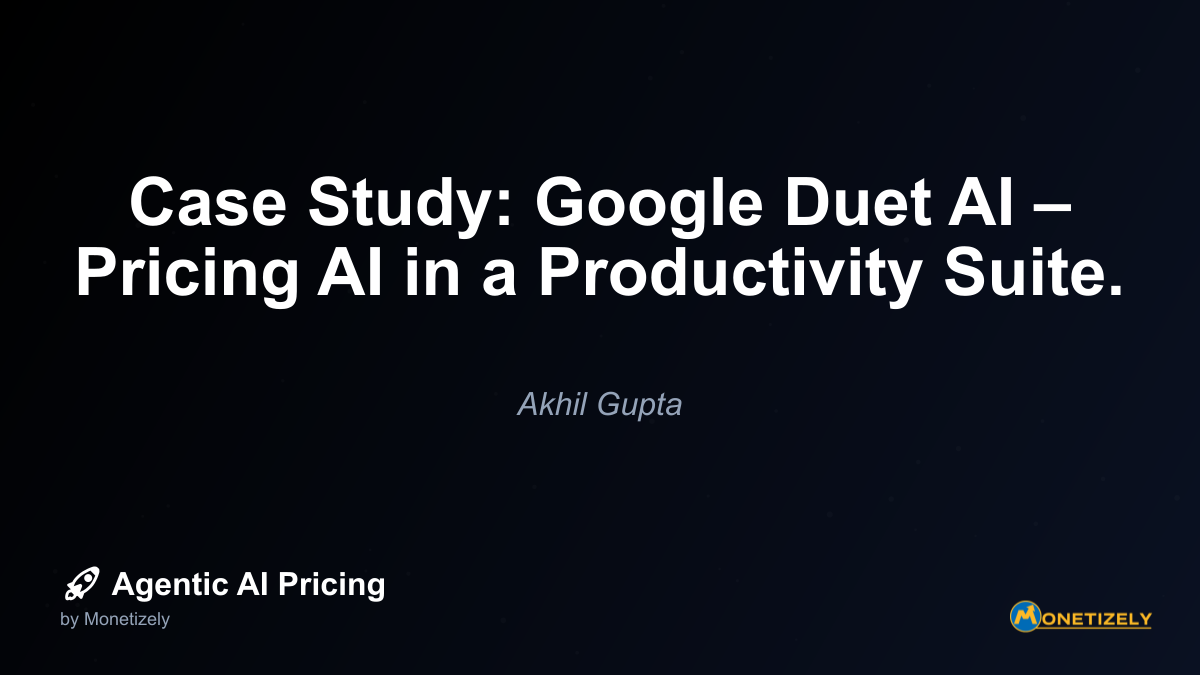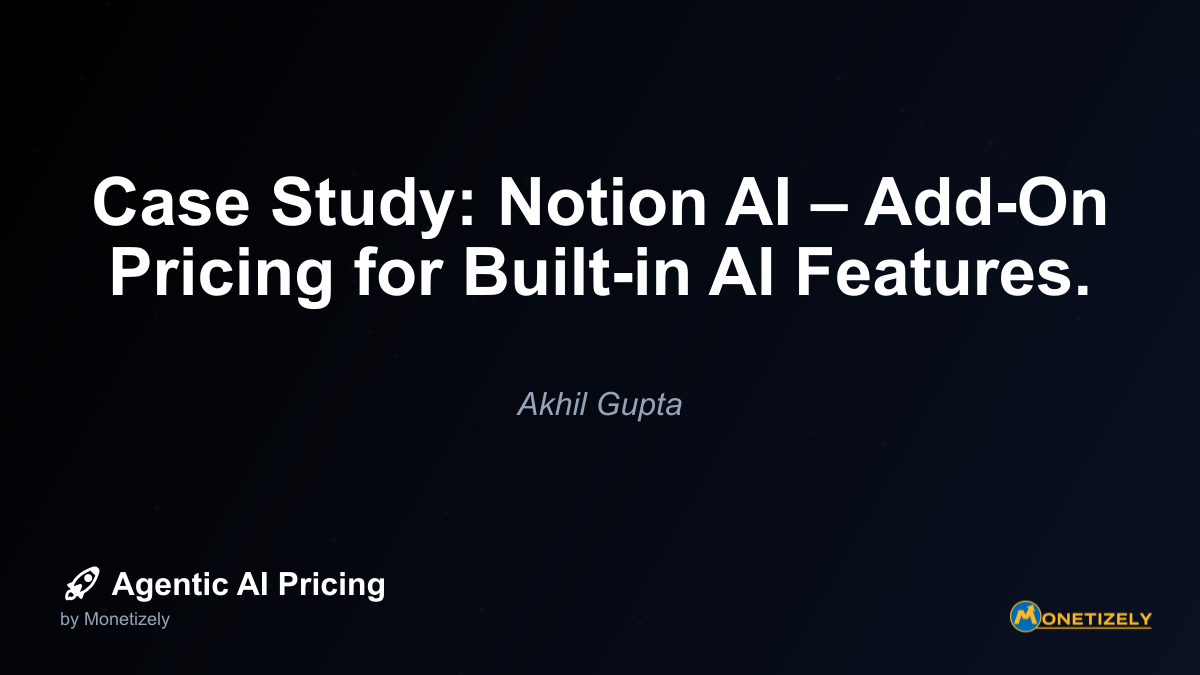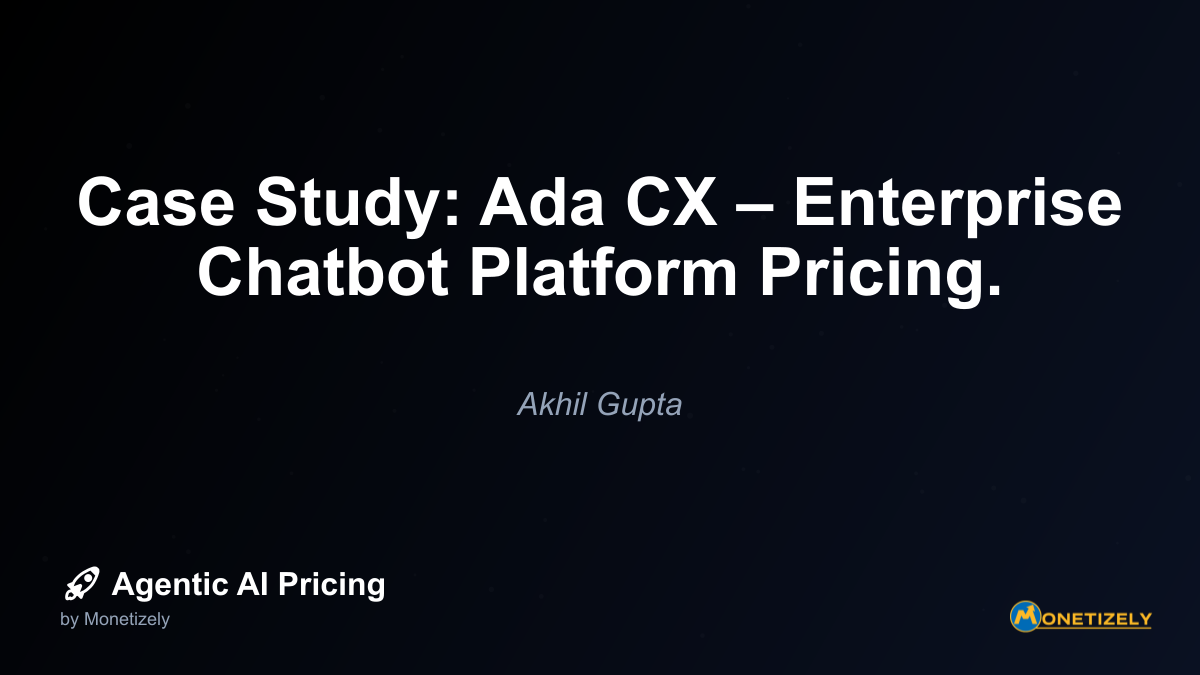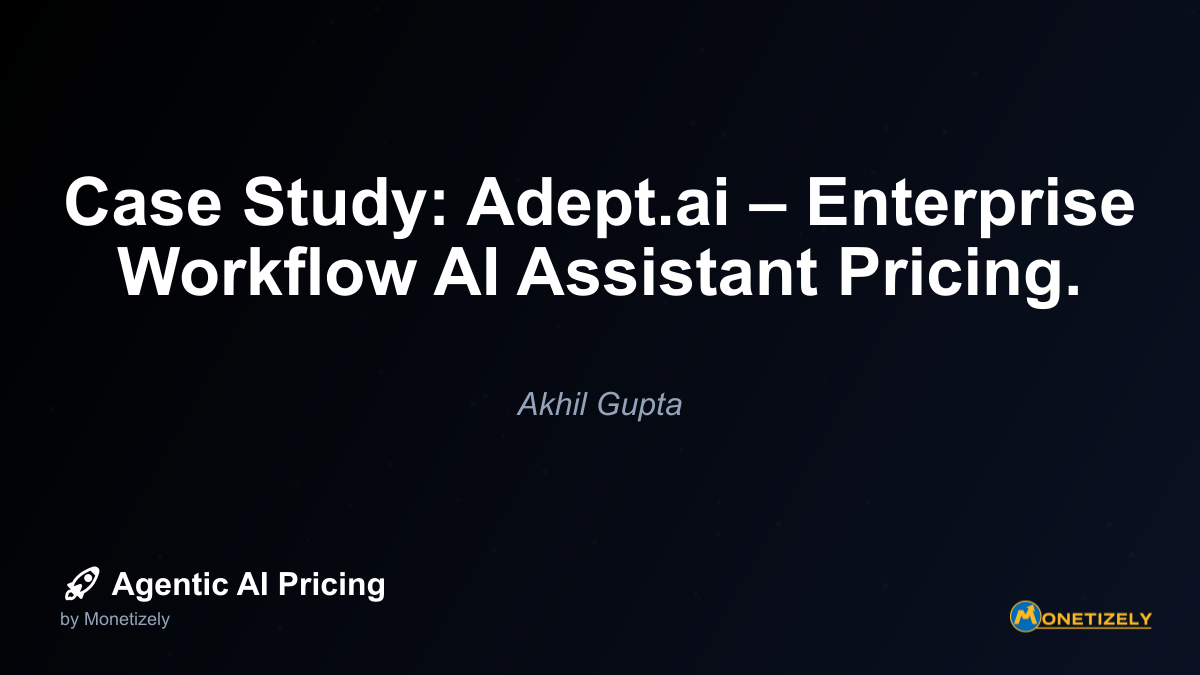· Akhil Gupta · Case Studies · 7 min read
Case Study: Microsoft 365 Copilot – Flat Add-On Subscription.
AI and SaaS Pricing Masterclass
Learn the art of strategic pricing directly from industry experts. Our comprehensive course provides frameworks and methodologies for optimizing your pricing strategy in the evolving AI landscape. Earn a professional certification that can be imported directly to your LinkedIn profile.

Financial Impact and ROI Considerations
Microsoft’s pricing strategy for Copilot carries significant financial implications for both Microsoft and its customers.
Revenue Impact for Microsoft
The $30 per user per month pricing creates a substantial revenue opportunity:
- Revenue Multiplication: If just 25% of Microsoft’s 382 million commercial Office 365 users adopt Copilot, it would generate over $34 billion in annual recurring revenue
- Margin Improvement: Despite the costs of running the underlying AI models, the add-on nature of Copilot creates higher margins than the base subscriptions
- Growth Driver: Copilot has the potential to become Microsoft’s next major growth engine, similar to what Azure and cloud services have been
Customer ROI Calculations
For customers, the ROI calculation is more complex:
- Productivity Gains: The primary value driver is time savings for knowledge workers
- Error Reduction: Secondary benefits include fewer errors in content creation and data analysis
- Adoption Rates: The actual ROI depends heavily on user adoption and effective integration into workflows
- Training Costs: Organizations must factor in training and change management expenses
A typical ROI calculation might look like this:
| Factor | Calculation | Monthly Impact |
|---|---|---|
| Time savings | 2 hours/week × 4 weeks × $100/hour | +$800 per user |
| Error reduction | Estimated at 5% of rework time | +$100 per user |
| Training costs | $200 amortized over 6 months | -$33 per user |
| Copilot subscription | $30 per month | -$30 per user |
| Net monthly ROI | +$837 per user |
This calculation shows why organizations with high-value knowledge workers can easily justify the premium pricing, while those with lower labor costs might find the ROI less compelling.
Lessons for Agentic AI Pricing Strategy
Microsoft’s approach with Copilot offers several valuable lessons for companies developing pricing strategies for their own agentic AI solutions:
1. Value-Based Pricing Over Cost-Plus
Microsoft’s strategy demonstrates that when AI delivers transformative capabilities, pricing should be anchored to value creation rather than to the cost of development or delivery. This applies particularly to agentic AI that can automate complex tasks or augment human capabilities.
For example, an AI agent that can autonomously manage customer support tickets should be priced based on the labor costs it displaces or augments, not on the computational resources it consumes.
2. Simplicity Trumps Complexity
Despite having access to usage data that could enable complex metering and tiering, Microsoft opted for a simple flat fee. This simplicity reduces cognitive load for buyers and simplifies budgeting for organizations.
For agentic AI solutions, this suggests that while usage-based models might seem more precisely aligned with value, they can create friction in the sales process and uncertainty for customers. A flat fee with clear value boundaries may be more effective, especially in early market stages.
3. Segmentation Through Prerequisites
Rather than creating different versions of Copilot for different customer segments, Microsoft used license prerequisites and minimum seat requirements to naturally segment the market. This approach maintains product integrity while ensuring appropriate targeting.
Microsoft’s Copilot pricing reveals several future trends in AI monetization, including how prerequisite requirements can effectively segment markets without creating confusion through multiple product variants.
4. Staged Rollout Strategy
Microsoft’s phased approach—starting with enterprise customers before expanding to smaller businesses—allowed for refinement of both the product and the pricing strategy based on initial feedback.
For agentic AI products, this suggests a go-to-market strategy that begins with customers who can provide valuable feedback and have the highest willingness to pay, before expanding to more price-sensitive segments.
Critiques and Alternative Approaches
While Microsoft’s flat fee add-on model has been largely successful, it’s not without criticism or alternative approaches worth considering:
Usage-Based Alternatives
Some argue that a usage-based model would better align with actual value creation:
- Per-Task Pricing: Charging based on the number of tasks completed by Copilot
- Outcome-Based Pricing: Fees tied to measurable outcomes like documents created or time saved
- Tiered Usage: Different price points based on intensity of use
Bundling Considerations
Others suggest that AI capabilities should be bundled into existing products rather than charged separately:
- Inclusive Approach: Including AI features in existing subscriptions to drive retention and upgrades
- Freemium Model: Basic AI capabilities free with premium features as paid add-ons
- Capability-Based Tiers: Different subscription tiers with progressively more advanced AI capabilities
Vertical-Specific Pricing
Microsoft’s one-size-fits-all approach may not optimize for all industries:
- Industry-Specific Pricing: Different price points based on industry-specific value creation
- Role-Based Pricing: Different prices for different user roles (e.g., higher for executives, lower for support staff)
- Outcome-Specific Versions: Specialized versions of Copilot optimized and priced for specific business outcomes
Future Evolution of Microsoft’s Pricing Strategy
Microsoft’s initial pricing approach is likely just the beginning of a more sophisticated pricing evolution:
Potential Future Directions
Based on market reception and competitive responses, we might expect:
- Tiered Offerings: Introduction of “Copilot Basic” and “Copilot Pro” versions at different price points
- Industry Solutions: Specialized versions for healthcare, finance, and other verticals with adjusted pricing
- Bundle Adjustments: Inclusion of Copilot in premium E5 licenses while maintaining the add-on for other tiers
- Consumption Elements: Introduction of some usage-based elements for specific high-value features
Competitive Pressures
As competitors respond and the market matures, Microsoft will face pressure to:
- Demonstrate ROI: Provide more concrete evidence of productivity gains to justify the premium
- Differentiate: Clearly distinguish Copilot from increasingly capable competitors
- Address Market Segments: Develop solutions for price-sensitive segments currently priced out
The evolution of AI copilot pricing models suggests that as the market matures, we’ll likely see more sophisticated approaches that balance flat fees with usage-based components to better align with different customer segments and use cases.
Implementation Guidance for AI Pricing Strategists
For companies looking to apply lessons from Microsoft’s Copilot pricing to their own agentic AI solutions, consider the following framework:
1. Value Quantification
Before setting prices:
- Identify Primary Value Drivers: Time savings, error reduction, quality improvement, etc.
- Quantify in Customer Terms: Translate to monetary value for different customer segments
- Validate with Research: Use customer interviews and market research to validate assumptions
2. Market Segmentation
Determine how different customer segments perceive value:
- Segment by Willingness to Pay: Identify early adopters with highest value perception
- Segment by Use Case: Different applications may justify different pricing approaches
- Segment by Organization Size: Enterprise vs. mid-market vs. small business needs
3. Pricing Structure Selection
Choose the appropriate structure based on value delivery and market maturity:
- Flat Fee: Simplest approach, best when value is consistent across users
- Tiered Pricing: Offers good balance of simplicity and customization
- Usage-Based: Most precise alignment with value, but highest complexity
- Hybrid Approaches: Combining base fees with usage components
4. Go-to-Market Strategy
Plan the rollout to maximize learning and adoption:
- Phased Approach: Start with high-value segments before broader rollout
- Trial Programs: Design trials that demonstrate value quickly
- ROI Tools: Develop calculators and case studies to support the value proposition
- Feedback Loops: Create mechanisms to gather pricing feedback for iterations
Conclusion: The Copilot Pricing Precedent
Microsoft’s $30 per user per month pricing for Copilot represents more than just a product launch—it establishes a precedent for how transformative AI capabilities can be monetized in the enterprise software market.
By choosing a substantial flat fee add-on model, Microsoft has signaled that AI capabilities represent a step-change in value creation that justifies significant price premiums. This approach has effectively reset customer expectations about the value of AI in productivity software and created a new benchmark against which other AI solutions will be measured.
For businesses developing agentic AI solutions, Microsoft’s approach offers a valuable case study in bold, value-based pricing. While not every aspect of Microsoft’s strategy will be applicable to all AI products, the core principle—that transformative capabilities deserve transformative pricing—provides a powerful framework for monetization strategies.
The success of Microsoft’s approach will ultimately be determined by the actual productivity gains realized by customers and the competitive responses it triggers. But regardless of the long-term outcome, the Copilot pricing strategy has already changed the conversation about AI monetization from “how much does it cost to provide?” to “how much value does it create?”—a shift that benefits the entire AI ecosystem.
As AI capabilities continue to evolve, pricing strategies will inevitably become more sophisticated and nuanced. But Microsoft’s clear, value-based approach with Copilot provides a strong foundation on which future AI monetization models can build.
Co-Founder & COO
Akhil is an Engineering leader with over 16+ years of experience in building, managing and scaling web-scale, high throughput enterprise applications and teams. He has worked with and led technology teams at FabAlley, BuildSupply and Healthians. He is a graduate from Delhi College of Engineering and UC Berkeley certified CTO.
Pricing Strategy Audit
Let our experts analyze your current pricing strategy and identify opportunities for improvement. Our data-driven assessment will help you unlock untapped revenue potential and optimize your AI pricing approach.




